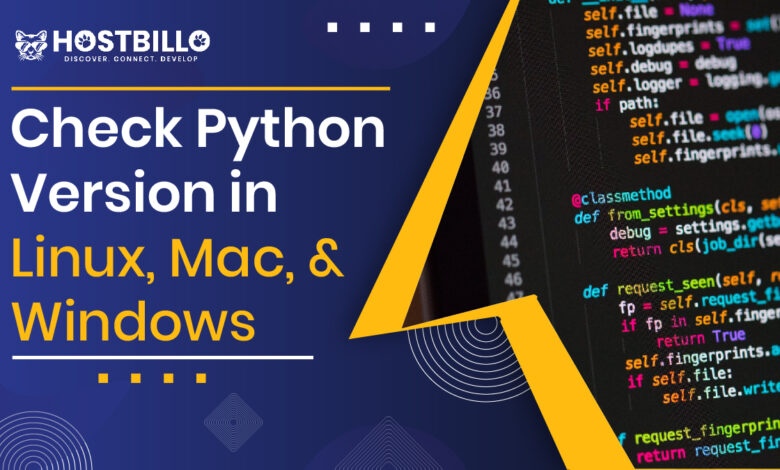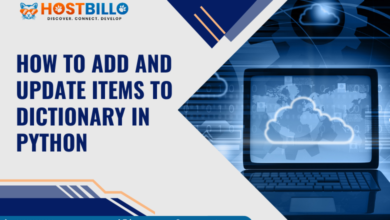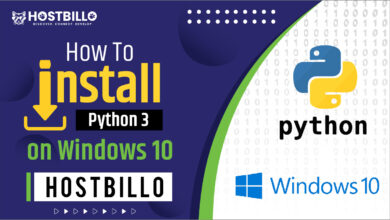Check Python Version in Linux, Mac, & Window

Experts always advocate using the latest version of a programming language. By doing this, you get to enjoy the improved features and functions. The best part is that you can stand assured about the system’s security. When it comes to the programming language, Python is one of the most popular choices. It is likely that you are using this programming language on Linux, Mac, or Windows systems. How to check if you have the latest version installed in your system? Paragraphs underneath shall discuss the key points in that regard. This way, you can keep enjoying the features and functions, and the most comprehensive security features in the latest python version.
Requirements
You need to comply with certain system requirements to check if you are working on the latest version. Primarily, you must access the following terminal tab/command line:
- Mac Users: Finder > Applications > Utilities > Terminal
- Windows Users: Win+R > type PowerShell > Enter/OK
- Linux Users: Ctrl-Alt-T, Ctrl-Alt-F2
Even if you will find various Python versions, versions 2.7X and 3. X is the most sought-after choice in this regard. While considering the version numbers, you need to select from the following options:
- Micro
- Minor
- Major
The biggest difference between the major and the minor releases is in terms of compatibility features. For instance, version 3.6.1 features compatibility with the 3.7.1 version. The end digit resembles the latest update and patch.
Please make a note that Python versions 2.7 and 3.7 are completely different applications. If the software involves the previous version, it is likely that it will malfunction with the latest version. It is one of the key reasons to upgrade the version on an ongoing basis. Users using Python should be conversant about the version in use, and the system requirements so that they never have to compromise their performance.
Python 2 has discontinued releasing security updates since 2020.
Checking Python Version on Linux
Are you a Linux user? If so, you will surely wonder how to check the python version in Linux. You can easily accomplish this task through the following steps:
In the latest Linux Distributions, users find Python by default.
If you have to check the version in use, you need to open the terminal tab and input the command: python –version.
Checking Python Version on Windows
If the question is how to check the python version in windows, here comes the answer to it:
- Usually, Python never comes in the older versions of Windows. But, you can always afford to take out a few seconds to check, if it is installed in your device, and the version in use. You simply need to open the Powershell tab and provide the command: python –version.
- In case you have Python installed in your device, the query will return a positive answer along with the version number.
- If you have Python installed, it will report the version number.
- Alternatively, users can use the Windows Search menu to find the version installed in their device.
- You should hit the Windows Keys to initiate the search, and then type Python. The system will fetch the matching results. Usually, users are likely to find a similar result like: Python 3.7 (32-bit) app Or, Python 2.7 (32-bit)app.
This result displays the primary and secondary editions that are in use.
How to check the python version on Mac?
For users wondering how to check the Python Version on Mac, users should type the command: python –version in the terminal. The system will answer the version installed.
- In some cases, users get to a new screen that features multiple sets of information.
- To check if python is installed in such instances, users should scan the file location, looking for the term Python. It will usually come with a corresponding number.
Please take note that the corresponding number is the version in use.
Checking a System with Multiple Versions of Python
It can be the case that you have various versions of python installed on your device. How will you check in such cases? Please make a note that Python versions 2 and 3 are completely different programs. Usually, programming languages keep upgrading from the older to the latest version. But, the installation process for Python Versions 2 is completely different. Hence, you need different approaches for installing these versions. Most importantly, users must know that Python 3 does not feature complete compatibility with the backend. You can easily find the version in use with the following commands:
- For Python2: python –version
- For Python3: python3 –version
System configurations are made in a way that they differentiate between versions 2 and 3. If Python version 2 is not installed in your system, it will automatically read the Python Command as Python3. Python users should keep in mind that this programming language never upgrades on its own. Rather, users need to do it manually by downloading and installing the latest version.
Read More: cPanel-Managed VPS vs Cloud Server Hosting
How to Check the Python Version in Script?
While users write an application, it is helpful to check the programming language version, before getting into action. It will enable the user to escape the chances of crashes and threats related to incompatibility. If you have to check if python’s latest version is installed on your device, you can operate with the following commands:
import sys
if not sys.version_info.major == 3 and sys.version_info.minor >= 6:
print(“Python 3.6 or higher is required.”)
print(“You are using Python {}.{}.”.format(sys.version_info.major, sys.version_info.minor))
sys.exit(1)
Once the script starts to run, it will figure out if the latest Python version is installed in the system. In case the device is running on an older version, the command will fetch the specific version installed in the system.
The points discussed above must have furnished the necessary guide to check if you have the latest version of python installed on your device. No matter the Operating system involved, it will make it easier to determine if you are working on the latest release. Today, Python is one of the most crucial and in-demand programming languages with billions of users worldwide. Hence, it becomes essential to get familiar with the latest version of the programming language.


